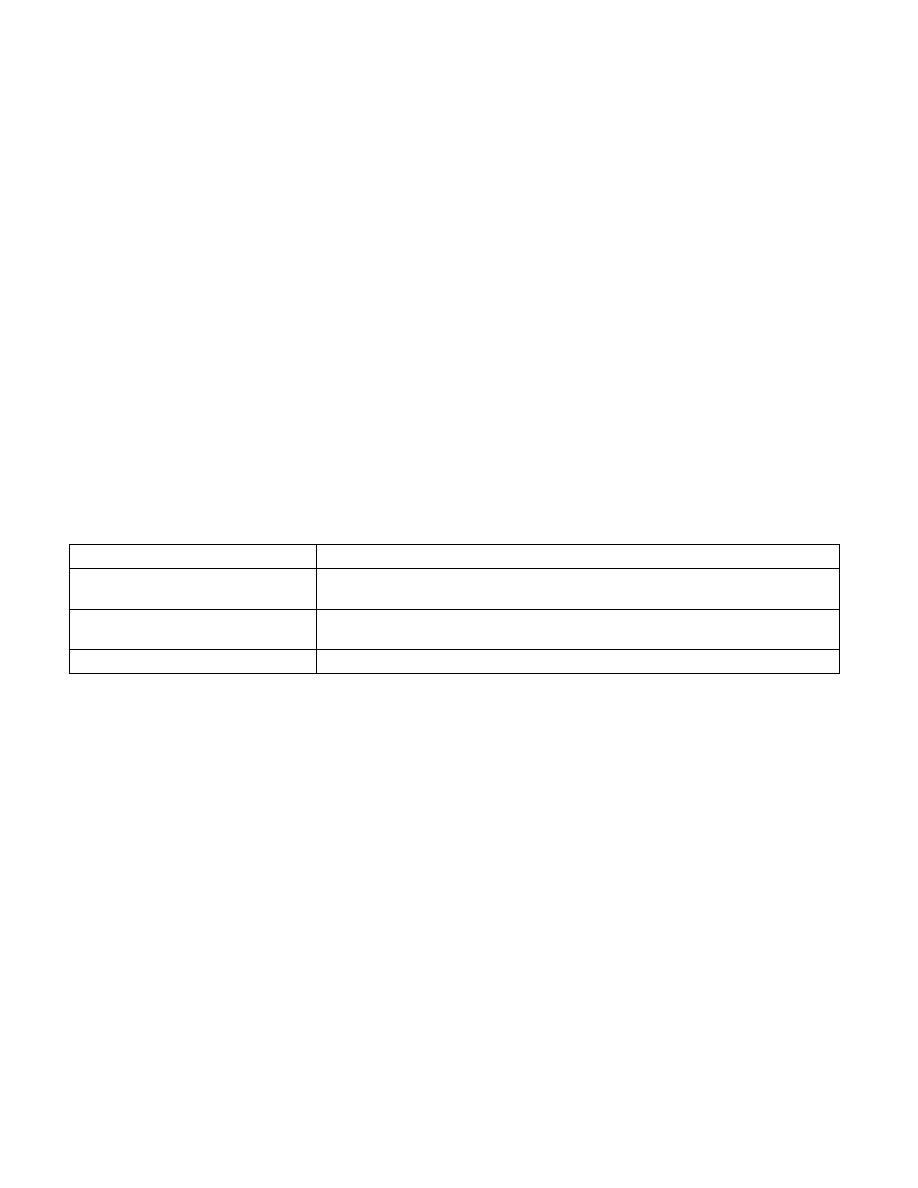
Vol. 1 8-29
PROGRAMMING WITH THE X87 FPU
The flag (DE) for this exception is bit 1 of the x87 FPU status word, and the mask bit (DM) is bit 1 of the x87 FPU
control word.
When a denormal-operand exception occurs and the exception is masked, the x87 FPU sets the DE flag, then
proceeds with the instruction. The denormal operand in single- or double-precision floating-point format is auto-
matically normalized when converted to the double extended-precision floating-point format. Subsequent opera-
tions will benefit from the additional precision of the internal double extended-precision floating-point format.
When a denormal-operand exception occurs and the exception is not masked, the DE flag is set and a software
exception handler is invoked (see Section 8.7, “Handling x87 FPU Exceptions in Software”). The top-of-stack
pointer (TOP) and source operands remain unchanged.
For additional information about the denormal-operation exception, see Section 4.9.1.2, “Denormal Operand
Exception (#D).”
8.5.3
Divide-By-Zero Exception (#Z)
The x87 FPU reports a floating-point divide-by-zero exception whenever an instruction attempts to divide a finite
non-zero operand by 0. The flag (ZE) for this exception is bit 2 of the x87 FPU status word, and the mask bit (ZM)
is bit 2 of the x87 FPU control word. The FDIV, FDIVP, FDIVR, FDIVRP, FIDIV, and FIDIVR instructions and the other
instructions that perform division internally (FYL2X and FXTRACT) can report the divide-by-zero exception.
When a divide-by-zero exception occurs and the exception is masked, the x87 FPU sets the ZE flag and returns the
values shown in Table 8-10. If the divide-by-zero exception is not masked, the ZE flag is set, a software exception
handler is invoked (see Section 8.7, “Handling x87 FPU Exceptions in Software”), and the top-of-stack pointer
(TOP) and source operands remain unchanged.
8.5.4
Numeric Overflow Exception (#O)
The x87 FPU reports a floating-point numeric overflow exception (#O) whenever the rounded result of an arith-
metic instruction exceeds the largest allowable finite value that will fit into the floating-point format of the destina-
tion operand. (See Section 4.9.1.4, “Numeric Overflow Exception (#O),” for additional information about the
numeric overflow exception.)
When using the x87 FPU, numeric overflow can occur on arithmetic operations where the result is stored in an x87
FPU data register. It can also occur on store floating-point operations (using the FST and FSTP instructions), where
a within-range value in a data register is stored in memory in a single-precision or double-precision floating-point
format. The numeric overflow exception cannot occur when storing values in an integer or BCD integer format.
Instead, the invalid-arithmetic-operand exception is signaled.
The flag (OE) for the numeric-overflow exception is bit 3 of the x87 FPU status word, and the mask bit (OM) is bit
3 of the x87 FPU control word.
When a numeric-overflow exception occurs and the exception is masked, the x87 FPU sets the OE flag and returns
one of the values shown in Table 4-10. The value returned depends on the current rounding mode of the x87 FPU
(see Section 8.1.5.3, “Rounding Control Field”).
The action that the x87 FPU takes when numeric overflow occurs and the numeric-overflow exception is not
masked, depends on whether the instruction is supposed to store the result in memory or on the register stack.
•
Destination is a memory location — The OE flag is set and a software exception handler is invoked (see
Section 8.7, “Handling x87 FPU Exceptions in Software”). The top-of-stack pointer (TOP) and source and
destination operands remain unchanged. Because the data in the stack is in double extended-precision format,
Table 8-11. Divide-By-Zero Conditions and the Masked Responses to Them
Condition
Masked Response
Divide or reverse divide operation with a
0 divisor.
Returns an ∞ signed with the exclusive OR of the sign of the two operands to the
destination operand.
FYL2X instruction.
Returns an ∞ signed with the opposite sign of the non-zero operand to the destination
operand.
FXTRACT instruction.
ST(1) is set to –∞; ST(0) is set to 0 with the same sign as the source operand.